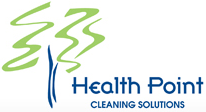When dealing with biohazard cleanup, OSHA compliance is crucial. It ensures safety for workers and anyone in the area. This guide will explain what OSHA Compliance for Biohazard Cleanup means, why it matters, and how to follow the rules effectively.
Table of Contents
Key Takeaways
- OSHA stands for the Occupational Safety and Health Administration. It sets safety standards for workplaces.
- Biohazard cleanup involves handling materials that can harm health. This includes blood, chemicals, and other dangerous substances.
- Compliance with OSHA helps protect workers and the public from health risks.
- Training and proper equipment are key to maintaining safety during cleanup.
- Businesses in Phoenix need to stay updated on local regulations and OSHA guidelines.
For more on safety regulations, check out our page on Workplace Safety Standards.
Understanding OSHA Compliance for Biohazard Cleanup and Its Importance
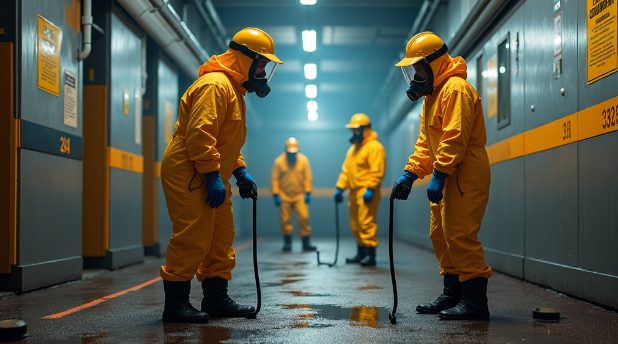
OSHA Cleanup is a government agency that makes sure workplaces are safe. They create rules to protect workers from health risks. This is especially important in biohazard cleanup. When dealing with substances that can cause illness, it is vital to follow OSHA’s guidelines.
What Is Biohazard Cleanup?
Biohazard cleanup refers to removing dangerous materials. These materials can be biological, like blood or bodily fluids, or chemical, like hazardous waste. Cleaning these areas safely is essential to avoid health problems for workers and the public.
Why OSHA Compliance Matters
Following OSHA rules helps keep everyone safe. When businesses comply with these regulations, they show they care about their workers and customers. This builds trust and can improve a company’s reputation.
Key OSHA Standards for Biohazard Cleanup
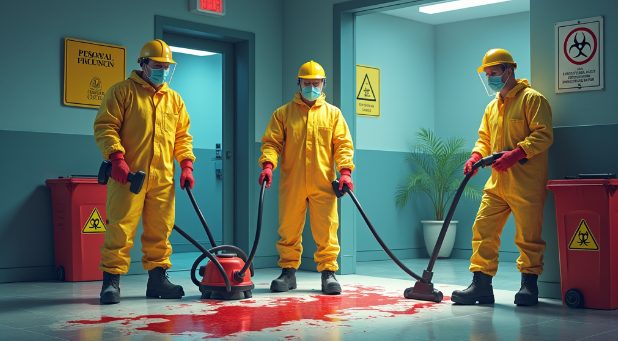
There are specific standards OSHA outlines for biohazard cleanup. Knowing these can help you stay compliant.
Bloodborne Pathogens Standard
This standard is crucial for workplaces that deal with blood or bodily fluids. It requires employers to:
- Provide training to workers.
- Offer protective gear like gloves and masks.
- Have a written plan for handling exposure incidents.
Hazard Communication Standard
This standard ensures that workers know about the chemicals they might encounter. It requires:
- Proper labeling of chemicals.
- Safety Data Sheets (SDS) for all hazardous substances.
- Training for workers on how to handle these chemicals safely.
Personal Protective Equipment (PPE)
Employers must provide appropriate PPE to their workers. This includes items like gloves, goggles, and masks. PPE protects workers from exposure to harmful materials during cleanup.
| OSHA Standards | Requirements | Importance |
|---|---|---|
| Bloodborne Pathogens Standard | Training, PPE, Written Exposure Plan | Protects workers from infectious materials |
| Hazard Communication Standard | Labeling, SDS, Training | Ensures safe handling of chemicals |
| Personal Protective Equipment | Provision of gloves, goggles, masks | Reduces risk of exposure to hazards |
Steps for OSHA Compliance in Biohazard Cleanup
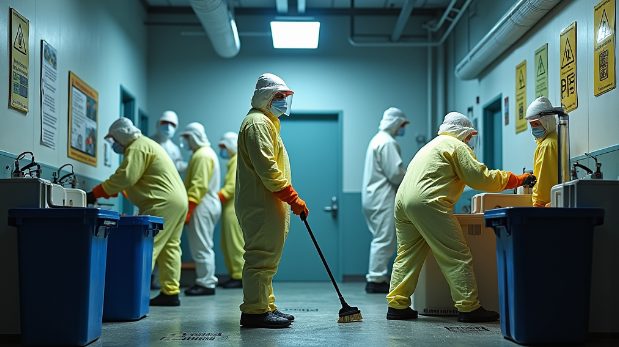
Becoming OSHA-compliant involves several important steps. Here is how to ensure your business meets the necessary standards.
Develop an Exposure Control Plan
An exposure control plan outlines how to minimize exposure to biohazards. It should include:
- Specific procedures for biohazard cleanup.
- Training requirements for workers.
- Actions to take in case of exposure.
Provide Training
Training is vital for all workers involved in biohazard cleanup. They should understand:
- The dangers of biohazards.
- How to use PPE effectively.
- The procedures for handling and disposing of hazardous materials.
Use Proper Equipment
Having the right equipment is essential. This includes:
- High-quality PPE that fits well.
- Tools for safely handling materials.
- Containers for proper disposal of biohazard waste.
Conduct Regular Inspections
Regular inspections help ensure that safety measures are in place. Inspect your equipment and procedures often. Make any necessary changes to improve safety.
Keep Records
OSHA requires businesses to maintain records of training and inspections. Keep these records organized and accessible. This shows that you are serious about safety and compliance.
- Maintain an organized filing system for training records
- Schedule regular safety audits to assess compliance
- Highlight changes in regulations that impact your procedures
Local Regulations in Phoenix, Arizona
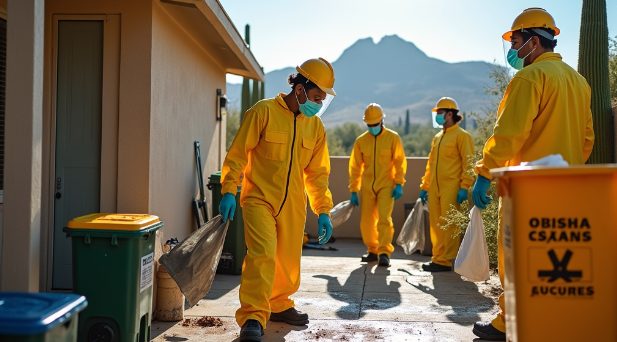
In addition to federal OSHA regulations, local laws may apply in Phoenix. It’s important to check with local authorities to ensure full compliance.
Understanding Arizona State Laws
Arizona has its own set of health and safety regulations that may affect biohazard cleanup. Familiarize yourself with these laws to ensure that you are following all required guidelines.
Collaborating with Local Agencies
Working with local agencies can help you stay informed about the latest regulations. They can provide valuable resources and support for your business.
Common Mistakes in OSHA Compliance for Biohazard Cleanup
Even experienced companies can make mistakes when it comes to OSHA compliance. Here are some common pitfalls to avoid.
Neglecting Training
Some businesses skip training or do not provide it regularly. This can lead to accidents and injuries. Make training a priority for all employees involved in cleanup.
Using Inadequate PPE
Using the wrong or low-quality PPE can put workers at risk. Always invest in high-quality gear that meets OSHA standards.
Failing to Update Procedures
Regulations change, and your procedures should too. Regularly review and update your policies to stay compliant with both OSHA and local regulations.
| Common Mistakes | Consequences | Prevention Strategies |
|---|---|---|
| Neglecting Training | Increased accidents and injuries | Regular training sessions |
| Using Inadequate PPE | Higher risk of exposure | Invest in quality PPE |
| Failing to Update Procedures | Non-compliance penalties | Regular reviews and updates |
The Benefits of OSHA Compliance for Biohazard Cleanup
Maintaining OSHA Compliance for Biohazard Cleanup has many benefits for your business. Here are a few key advantages.
Improved Safety
The primary benefit of compliance is safety. With proper training and equipment, you reduce the chances of accidents and injuries.
Enhanced Reputation
When your business follows safety regulations, it builds trust with customers and clients. A strong reputation can lead to more business opportunities.
Lower Insurance Costs
Insurance companies may offer lower rates to companies that demonstrate a commitment to safety and compliance. This can save you money in the long run.
For more insights on effective training programs, visit our page on Employee Safety Training.
Preparing for an OSHA Inspection
It’s a good idea to be prepared for an OSHA inspection. Here is how to get ready.
Keep Your Records Organized
Having all your training and inspection records in order will help you during an inspection. It shows that you take safety seriously.
Conduct a Self-Inspection
Before an official inspection, conduct your self-inspection. Look for any areas that need improvement and address them before OSHA arrives.
Stay Informed
Stay up to date on OSHA regulations and local laws. This will help you maintain compliance and prepare for inspections.
Real-Life Experiences in OSHA Compliance for Biohazard Cleanup
Understanding real-life experiences can help highlight the importance of OSHA compliance. Here are a few insights from professionals in the field.
The Importance of Training
One cleaning technician shared how proper training helped them feel safe while working in a hazardous environment. They learned to recognize potential risks and how to protect themselves effectively.
Using the Right PPE
A supervisor emphasized the value of high-quality PPE. They noted how it not only protects workers but also promotes confidence and effectiveness during cleanup.
The Role of Teamwork
In biohazard cleanup, teamwork is vital. Workers must communicate and support each other to ensure a safe and efficient process.
Conclusion
OSHA compliance for biohazard cleanup is not just a legal requirement; it is a vital part of protecting health and safety. Understanding the rules and following best practices can save lives. Always stay informed and make safety a priority in your business. By doing so, you can create a safe environment for your workers and customers in Phoenix, Arizona.
Safety matters, and compliance with OSHA is essential. Make it a part of your daily operations. By working together and following the rules, we can create a safer community for everyone. Feel free to visit our website or contact us for assistance.
